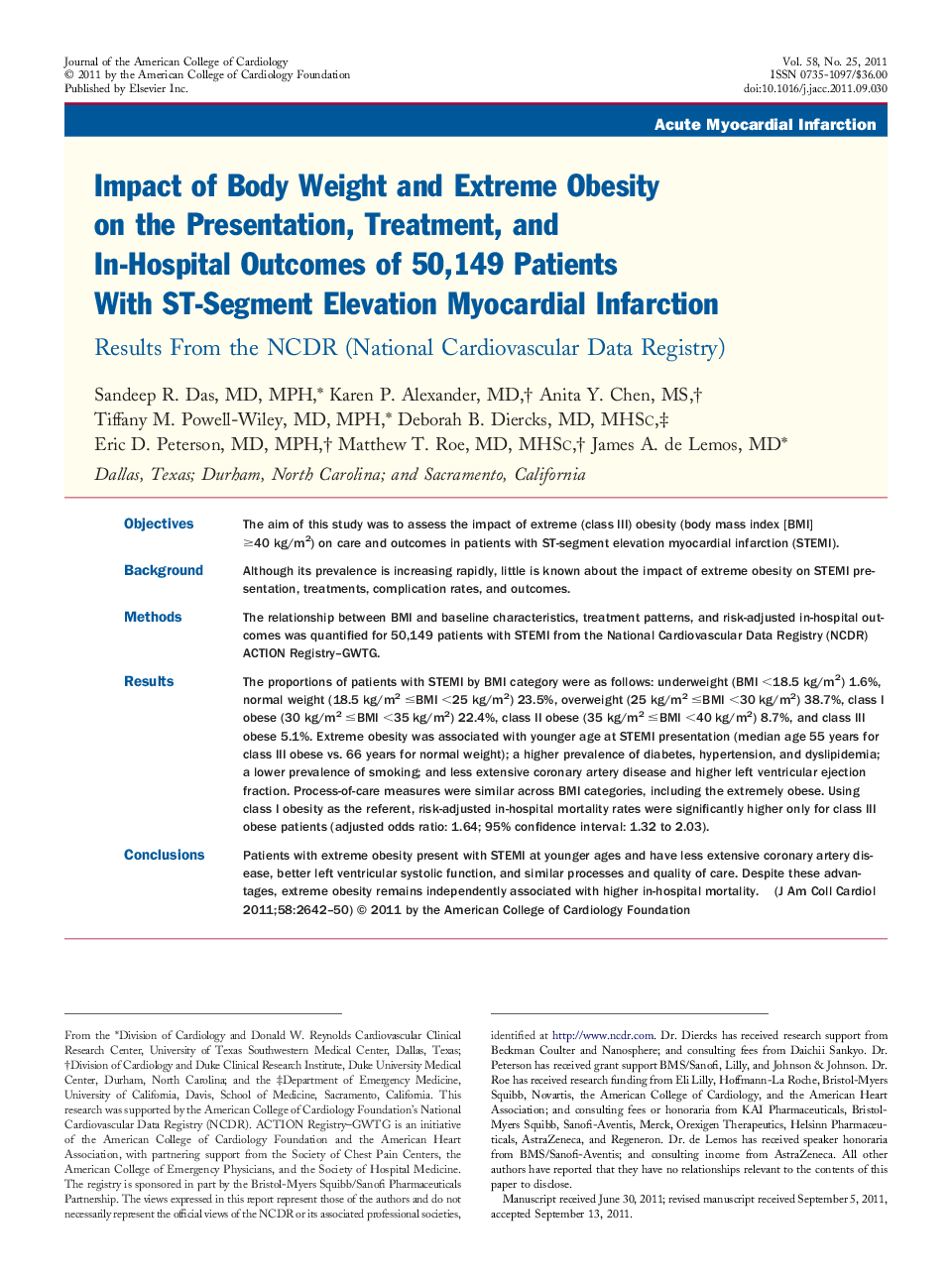| کد مقاله | کد نشریه | سال انتشار | مقاله انگلیسی | نسخه تمام متن |
|---|---|---|---|---|
| 2949466 | 1577233 | 2011 | 9 صفحه PDF | دانلود رایگان |

ObjectivesThe aim of this study was to assess the impact of extreme (class III) obesity (body mass index [BMI] ≥40 kg/m2) on care and outcomes in patients with ST-segment elevation myocardial infarction (STEMI).BackgroundAlthough its prevalence is increasing rapidly, little is known about the impact of extreme obesity on STEMI presentation, treatments, complication rates, and outcomes.MethodsThe relationship between BMI and baseline characteristics, treatment patterns, and risk-adjusted in-hospital outcomes was quantified for 50,149 patients with STEMI from the National Cardiovascular Data Registry (NCDR) ACTION Registry–GWTG.ResultsThe proportions of patients with STEMI by BMI category were as follows: underweight (BMI <18.5 kg/m2) 1.6%, normal weight (18.5 kg/m2 ≤BMI <25 kg/m2) 23.5%, overweight (25 kg/m2 ≤BMI <30 kg/m2) 38.7%, class I obese (30 kg/m2 ≤BMI <35 kg/m2) 22.4%, class II obese (35 kg/m2 ≤BMI <40 kg/m2) 8.7%, and class III obese 5.1%. Extreme obesity was associated with younger age at STEMI presentation (median age 55 years for class III obese vs. 66 years for normal weight); a higher prevalence of diabetes, hypertension, and dyslipidemia; a lower prevalence of smoking; and less extensive coronary artery disease and higher left ventricular ejection fraction. Process-of-care measures were similar across BMI categories, including the extremely obese. Using class I obesity as the referent, risk-adjusted in-hospital mortality rates were significantly higher only for class III obese patients (adjusted odds ratio: 1.64; 95% confidence interval: 1.32 to 2.03).ConclusionsPatients with extreme obesity present with STEMI at younger ages and have less extensive coronary artery disease, better left ventricular systolic function, and similar processes and quality of care. Despite these advantages, extreme obesity remains independently associated with higher in-hospital mortality.
Journal: Journal of the American College of Cardiology - Volume 58, Issue 25, 13–20 December 2011, Pages 2642–2650